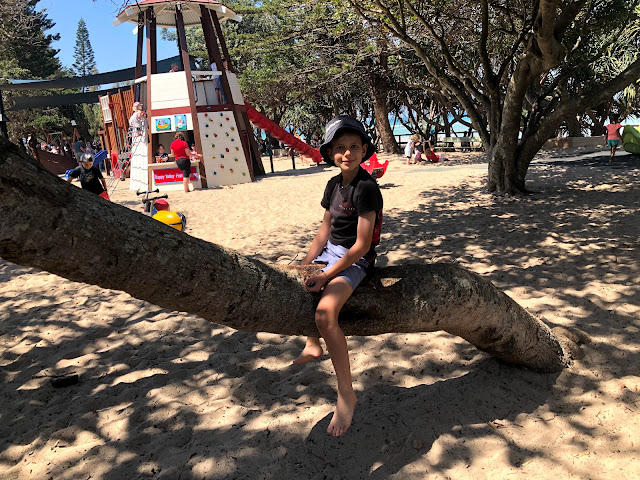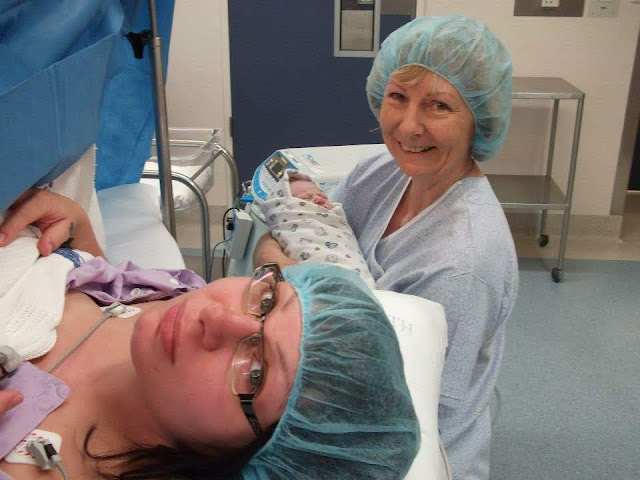The Mabo Decision
Cultural Warning: Aboriginal and Torres Strait Islander readers are warned that the following blog post contains images and names of deceased persons
Introduction
The writer acknowledges
the Aboriginal and Torres Strait Islander peoples as the traditional custodians
of Australian land. Respect is paid to
the Elders, past and present. With this
respect in mind, this essay will examine the Mabo decision and the
importance of this decision for Aboriginal and Torres Strait Islander
Australians. It will commence with a
brief biography of the life of Edward ‘Koiki’ Mabo. Next, an overview of Mabo v Queensland (No.2)
will be discussed, followed by a critique.
Finally, the impact the Mabo decision had on dispossession will be
analysed. It will be argued that,
fundamental as the Mabo decision may have been, it was conditional and with it
came complex rules the Crown had no right to attach.
The Man Behind the Law
Edward ‘Koiki’ Mabo, widely
known as ‘Eddie Mabo’, was a Torres Strait Islander born on June 29th,
1936 to ‘Robert’ Zesou Sambo and ‘Annie’ Poipe, née Mabo. His birth took place in the village of Las,
on an island called Mer (Murray Island), 5 days after which, Mabo’s mother
passed away. After his mother’s death,
Mabo was adopted and raised by his maternal Uncle Benny and Aunty Maiga Mabo,
as was Islander custom (Loos 2016).
Eddie Mabo’s native language was Meriam and in Meriam culture, respect
for other people’s land is instilled in children early in life. Mabo was no exception to this, and it was
these strong cultural morals which laid the foundation for Mabo’s future life
calling of Indigenous Australian rights advocacy (AIATSIS 2020). Mabo spoke a second Islander language—creol—and later, with the aid of one of his teachers,
he learnt English (Loos 2016).
An intelligent man and a
fast learner, upon leaving school, Mabo worked as a teacher’s aide on Yorke
Island and as an interpreter for a Torres Strait medical research team during a
malaria outbreak; however, on February 2nd in 1956, at just 16 years
of age, he was found guilty of the crimes, drinking alcohol and engaging in
sexual relations before marriage. These
crimes saw the Murray Island Court exile Mabo for a year. He spent this time in exile working aboard
fishing boats (Loos 2009). In 1957, he
commenced work in Queensland as a cane cutter and a railway fettler. It was there, Mabo met Ernestine Bonita
‘Netta’ Nehow, a South Sea Islander born in Queensland, with whom he would
later father 7 children and adopt a further 3 (Muswellbrook Shire Council 2020). On October 10th, 1959 the pair
were married in Ingham, at the local Methodist Church (Loos 2009).
Mabo had a longstanding
history in trade union politics which saw him take on a variety of roles in the
1960s. On the Townsville to Mount Isa
rail reconstruction project, Mabo was a union representative for the Torres
Strait Islanders. Between 1962 and 1967
he served on the Townsville Harbour Board, held the position of Islander
representative for the Trades and Labour Council, campaigned for the ‘yes’ vote
in the 1967 referendum and was secretary on the Aborigines Advancement League
of Queensland up until 1969. Mabo also
assisted in the organisation of the inter-racial conference, ‘We the
Australians: What is to Follow the Referendum’.
So well respected was Mabo, he was invited to present occasional
lectures at James Cook University, as well as Townsville College of Advanced
Education. These lectures increased in
number during the time he was employed at James Cook University as a gardener
which was from approximately 1967 until 1975 (Loos 2020). It was during this time Mabo learnt about the
Crown’s assertion of ownership over all Australian land, including the Torres
Strait Islands and their laws associated with that ownership. He disagreed with these laws—Mabo’s people
had lived on the Islands for thousands of years—and so, he sought to change
them (Reconciliation Australia 2012).
In 1981, while giving a
lecture about the feelings and beliefs of his people in respect of land
ownership, a lawyer offered to help Mabo challenge the Australian Government
land ownership claims through the Courts (Reconciliation Australia 2012). Mabo accepted and so, in May of 1982, Mabo
and four other Torres Strait Islanders commenced proceedings for native title
over the Murray Islands, as was their birthright. This battle spanned over the
next decade and is said to have been spurred by the refusal of the Department
of Aboriginal and Islander Affairs to allow Mabo to return to Murray Island to
see his family (Bourke & Cox 2019).
When he was not working on the Court case, Mabo worked on his boat and painted; however, the stress of the lengthy process had a negative impact on Mabo’s health, and he developed lung cancer. On 21st January 1992, at just 55 years of age, the cancer claimed his life. He sadly did not live to see the outcome of his life’s work (Muswellbrook Shire Council 2020). On 3rd June 1992, a mere 5 months after Mabo’s death, the High Court handed down their ruling, overturning the declaration of terra nullius—land belonging to no one. Consequently, Mabo was posthumously awarded the Australian Human Rights Medal in the Human Rights and Equal Opportunity Commission Awards. This award recognised Eddie Mabo’s, and others’, “‘…long and determined battle to gain justice for their people’ and the ‘work over many years to gain legal recognition for indigenous people’s rights’” (Muswell Shire Council 2020, para. 11).
Mabo v Queensland (No. 2)
As a result of the ruling
made on June 3rd, 1992, the High Court of Australia’s decision is
now historically referred to as the Mabo case. As part of this decision, it was declared
that, under Land Act 1962 (Q.), the Murray Islands are not Crown land
and the Meriam people were the rightful custodians (Mabo and others v.
Queensland (No. 2) (1992) 175 CLR 1).
Despite this ruling, a further two Orders were made, each of which
attached Crown laws and limitations to the very same land that had just been
ruled as not their own. It was
stipulated that anybody who had lost their cultural connection to the Islands,
be it voluntarily or otherwise, thereby forfeited their right to native
title. Further, any parcel of land
already dealt with by the Australian government in ways which were inconsistent
with native title, the government reserved the right to either extinguish or
suppress native title in those instances (Bourke & Cox 2019). It seemed the Court, by their own admission,
had no legal claim to the Murray Islands, yet they still refused to give up
complete control and return the Islands in their entirety to their rightful
owners. While the Mabo decision
laid a foundation for future Indigenous rights campaigners seeking claim to native
title, it should never have been made conditional.
In the case of Mabo, when put to the vote, most of the High Court judges held that any compensation for past acts of dispossession was not likely and generally, not even a possibility (Bourke & Cox 2019). In many ways, it was a decision that would prevent the sordid acts of Australia’s past from being repeated but it did little to repair injustices already wrought on First Nations People.
Conclusion
Edward ‘Koiki’ Mabo was a passionate, intelligent man who spent much of his life campaigning for the rights of his people. In an appalling failure of the Crown justice system, Mabo did not live to see his own success in the High Court when terra nullius was overturned. While this successful ruling was monumental for the future, much of the damage of dispossession already rendered by the Australian government would be protected by conditions attached to the native title of the Meriam people. This ruling would ensure that the mistakes of the past were not repeated but it would also ensure the government need not take full accountability or provide compensation in most cases. In addition, the commonwealth was given further power still to extinguish native title by way of elaborately worded loopholes. The Mabo case was the first step in the journey towards recognising the true custodians of the Murray Islands and it paved the way for future Indigenous land rights advocates. Regrettably, with it came wrongful conditions the Crown had no right to attach. After all, as the High Court freely admitted, the Murray Islands were not their land; they never had been.
References:
AIATIS 2020, Eddie Koiki Mabo,
Early Years, Australian Capital Territory, viewed 28 October 2020, <https://aiatsis.gov.au/eddie-koiki-mabo>.
Bourke, C & Cox, H 2019 in
C Bourke, E Bourke & B Edwards (ed.), Aboriginal Australia, 2nd edn,
University of Queensland Press, St Lucia, Queensland, pp. 56-75.
Loos, N 2009, ‘Edward Koiki Mabo: The
journey to native title’, Journal of Australian Studies, vol. 21, no. 54-55, pp. 108-119, viewed 29 October
2020, <https://www.tandfonline.com/doi/abs/10.1080/14443059709387343>.
Loos, N 2016, Mabo, Edward Koiki
(Eddie) (1936—1992), Australian Dictionary of Biography, National Centre of Biography, Australian National
University, viewed 28 October
2020, <https://ia.anu.edu.au/biography/mabo-edward-koiki-eddie-16122>.
Muswellbrook Shire Council 2020, Eddi
Mabo, Working with Indigenous Australians, New
South Wales, viewed 29 October 2020, <http://www.workingwithindigenousaustralians.info/content/History_11_C_Mabo.html>.
Reconciliation Australia 2012, 20th
anniversary of Mabo, Let’s Talk…, viewed on 29 October 2020, <https://www.reconciliation.org.au/wp-content/uploads/2017/11/Lets-Talk-Mabo.pdf>.
Taylor, B n.d., Remembering Eddie Mabo, NFSA, Australian Capital Territory, viewed 28 October 2020 <https://www.nfsa.gov.au/latest/remembering-eddie-mabo>.
Legislation:
Land Act 1962 (Q.)
Legal Authorities:
Mabo and others v. Queensland (No. 2) (1992) 175 CLR 1.











Comments
Post a Comment